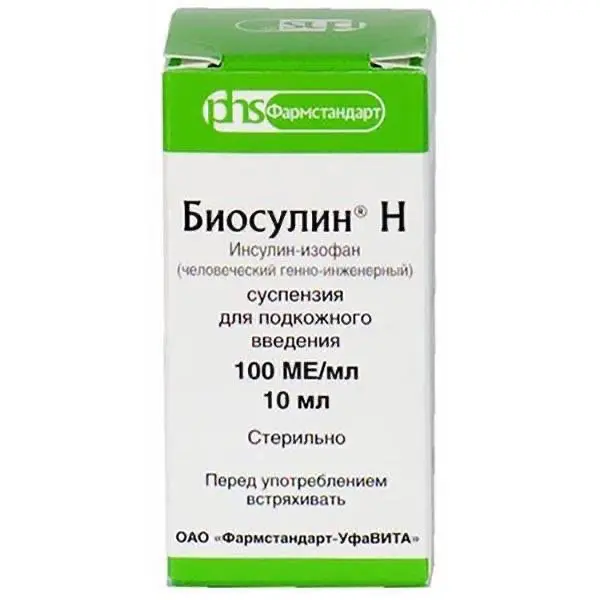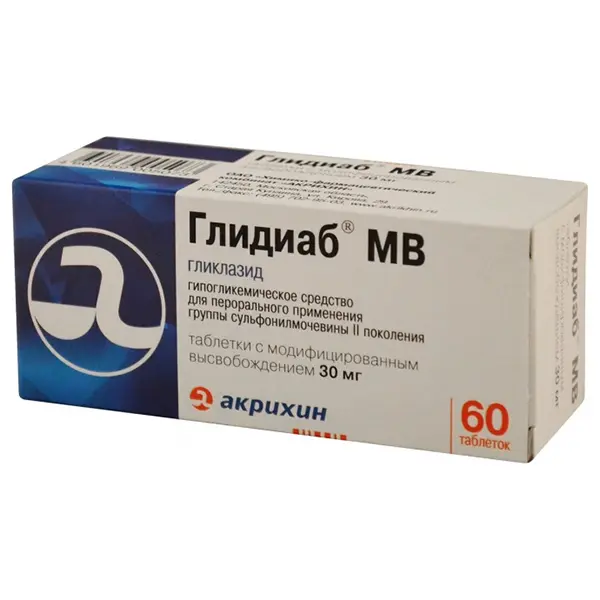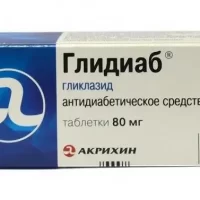Description
Rinsulin NPC Pharmacodynamics
Rinsulin® NPX is a human insulin produced by recombinant DNA technology. Insulin of medium duration of action. It interacts with specific receptor of outer cytoplasmic cell membrane and forms insulin-receptor complex, which stimulates intracellular processes, including synthesis of several key enzymes (hexokinase, pyruvate kinase, glycogen synthase etc.).
Decrease of glucose content in blood is caused by increase of its intracellular transport, intensification of absorption and assimilation by tissues, stimulation of lipogenesis, glycogenogenesis, decrease of glucose production rate by liver, etc.
The duration of action of insulin drugs is mainly due to the speed of absorption, which depends on several factors (e.g., the dose, route and place of administration), and therefore the action profile of insulin is subject to significant variations in different people and in the same person.
On average, after subcutaneous administration Rinsulin® NPC begins to act after 1.5 hours, the maximum effect develops between 4 and 12 hours, the duration of action is up to 24 hours.
Indications
– Type 1 diabetes mellitus;
– Diabetes mellitus type 2: stage of resistance to oral hypoglycemic agents, partial resistance to these drugs (during combined therapy), intercurrent diseases;
– Diabetes mellitus type 2 in pregnant women.
Contraindications .
– Increased individual sensitivity to insulin or any of the components of the drug;
– hypoglycemia.
Pregnancy and lactation:
There are no restrictions on the treatment of diabetes with insulin during pregnancy, since insulin does not penetrate the placental barrier. Intensified treatment of diabetes mellitus is necessary during pregnancy planning and during pregnancy. The need for insulin usually decreases in the first trimester of pregnancy and gradually increases in the second and third trimesters.
During childbirth and immediately after, the need for insulin may decrease dramatically. Shortly after delivery, insulin requirements quickly return to pre-pregnancy levels.
There are no restrictions on the treatment of diabetes with insulin during breastfeeding. However, it may be necessary to reduce the dose of insulin, so close monitoring for several months until the need for insulin is stabilized.
Dosage and administration method
- The drug is intended for subcutaneous administration.
- Dosage of the drug is determined by a physician individually in each case on the basis of blood glucose concentration. The average daily dose varies from 0.5 to 1 IU/kg of body weight (depends on the individual characteristics of the patient and the blood glucose concentration).
- Elderly patients using any insulin, including Rinsulin® NPX, are at increased risk of hypoglycemia due to the presence of concomitant pathology and the simultaneous receipt of several medications. This may necessitate adjustment of the insulin dose.
- Patients with impaired renal and hepatic function are at increased risk of hypoglycemia and may require more frequent adjustment of the insulin dose and more frequent monitoring of blood glucose.
- Intravenous administration of Rinsulin NPC® is contraindicated.
- Temperature of administered insulin must correspond to room temperature.
- The drug is usually injected subcutaneously in the thigh. Injections can also be made in the anterior abdominal wall, buttock or in the shoulder area in the projection of the deltoid muscle. It is necessary to change the injection sites within the anatomical area in order to prevent the development of lipodystrophy.
- When injecting insulin subcutaneously, care must be taken not to get into a blood vessel during injection.
- After injection, the injection site should not be massaged.
- Patients should be trained in the correct use of the insulin injection device.
- Insulin should not be used if there are flakes in it after mixing, if solid white particles are stuck to the bottom or walls of the vial, giving it a frozen appearance. Properly mixed suspension should be uniformly white and turbid.
- Rinsulin® NPH can be administered alone or in combination with short-acting insulin (Rinsulin® R).
- Used drug may be stored at room temperature (15 to 25 °C) for up to 28 days.





